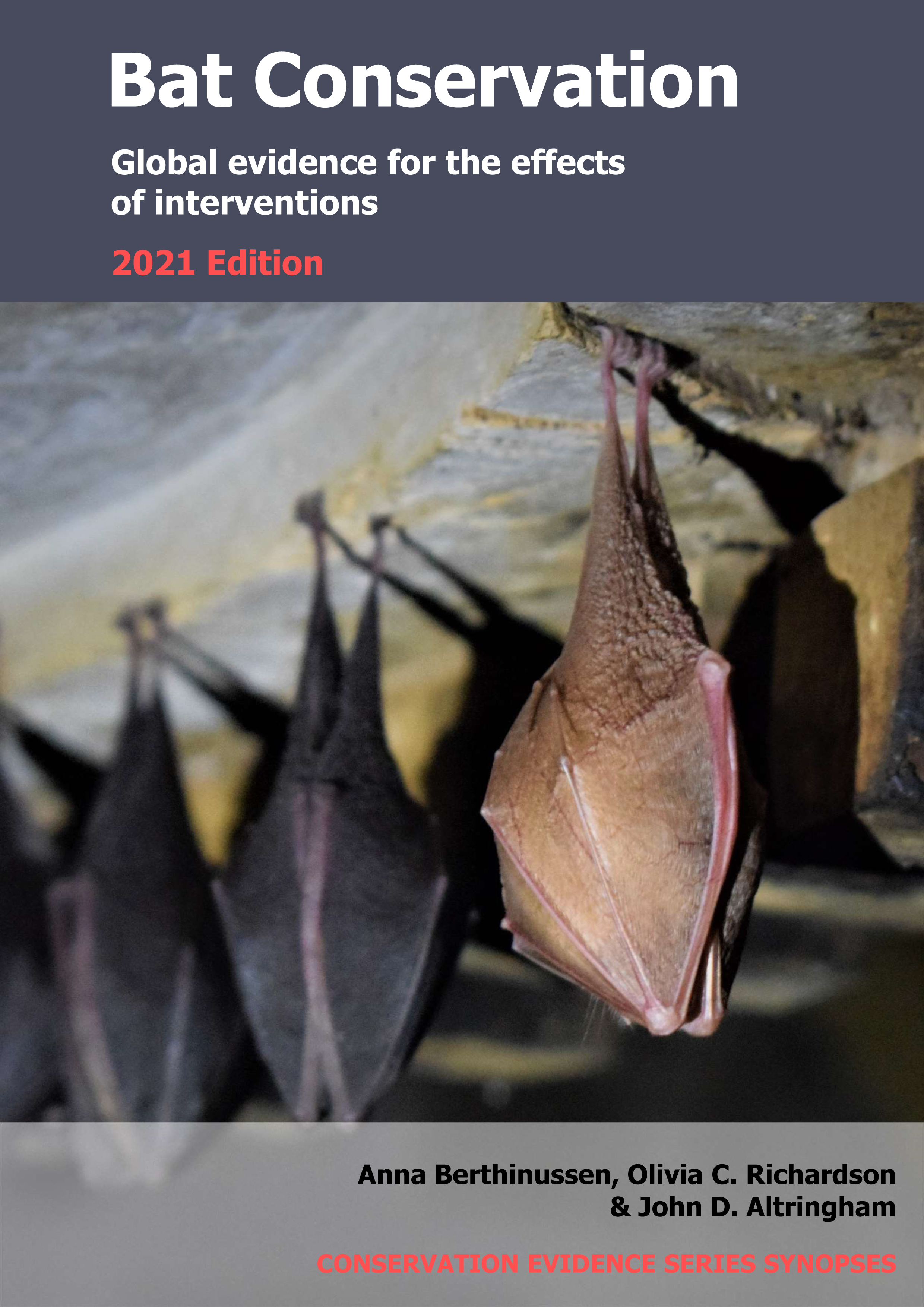Restrict timing of lighting
-
Overall effectiveness category Unknown effectiveness (limited evidence)
-
Number of studies: 1
View assessment score
Hide assessment score
How is the evidence assessed?
-
Effectiveness
38% -
Certainty
20% -
Harms
0%
Study locations
Supporting evidence from individual studies
A replicated, paired sites study prior to 2015 at 36 paired rural sites in France (Azam et al 2015) found that turning off street lights for part of the night resulted in higher activity for two bat species, lower activity for one bat species and similar activity for five bat species when compared with leaving street lights switched on all night. The average number of bat passes/night was higher with part-night lighting than full-night lighting for Plecotus spp. (part-night lighting: 2.3; full-night lighting: 0.6) and common noctules Nyctalus noctula (data not reported), but lower with part than full-night lighting for common pipistrelles Pipistrellus pipistrellus (part-night lighting: 515; full-night lighting: 1,130). Activity was similar under both light treatments for Kuhl’s pipistrelles Pipistrellus kuhlii, Nathusius’ pipistrelles Pipistrellus nathusii, Leisler’s bats Nyctalus leisleri, serotine bats Eptesicus serotinus and Myotis spp. (see original paper for detailed results). Each of 36 pairs of sites had one site with street lighting (high-pressure sodium lights, 10–99 lux) and one unlit control site within similar habitats. Street lights were either turned off for part of the night (between midnight and 05:00 h, 24 sites) or were left on for the full night (12 sites). Each of 36 pairs was sampled simultaneously using bat detectors for one full night between May and August (year not reported).
Study and other actions tested
Where has this evidence come from?
List of journals searched by synopsis
All the journals searched for all synopses
This Action forms part of the Action Synopsis:
Bat Conservation
Bat Conservation - Published 2021
Update 2020





)_2023.JPG)














